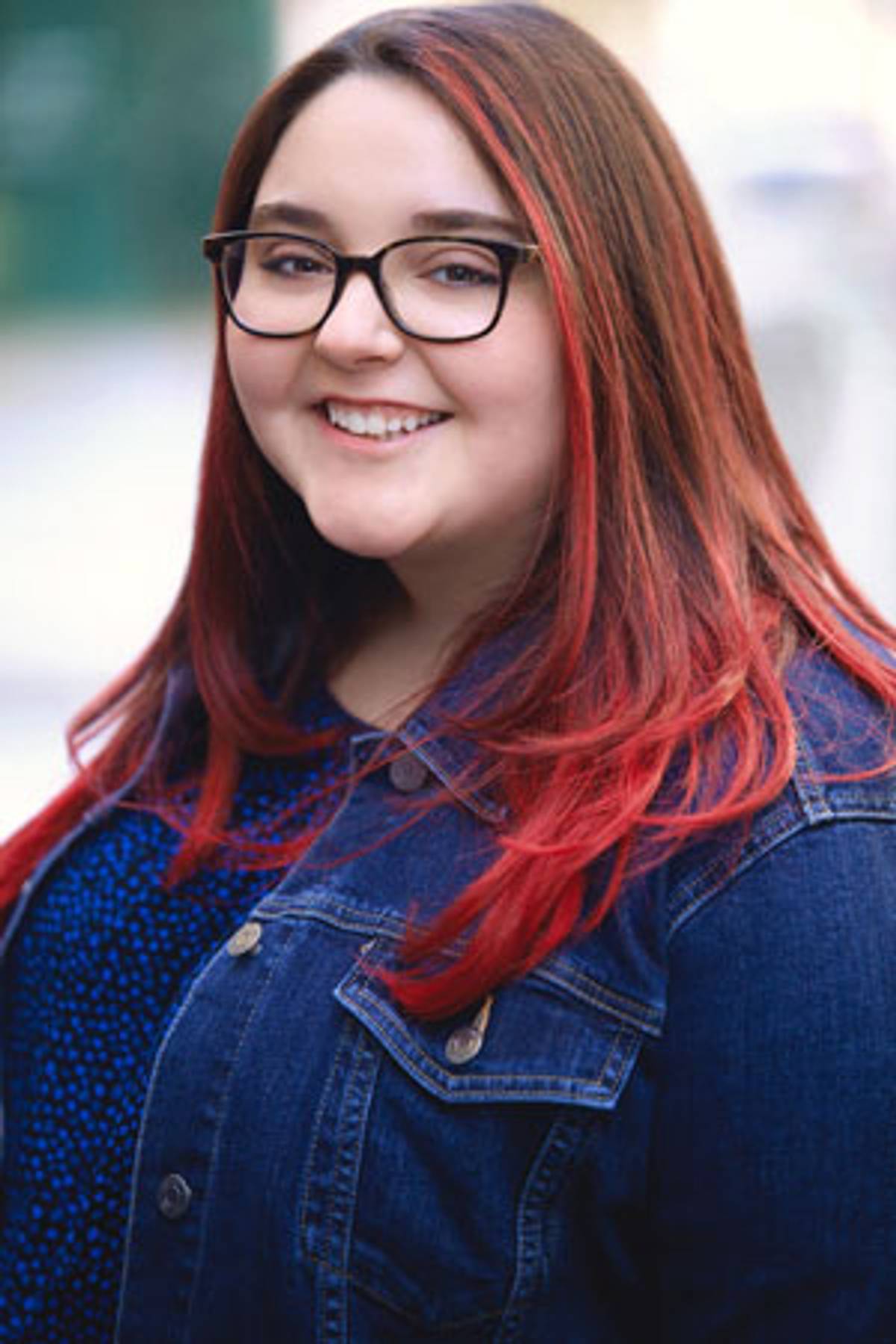Poetry Gone Viral
Eighteen-year-old Caroline Kaufman’s verse found its audience—and subsequent book deal—on Instagram




“Every revolution in poetry is apt to be … a return to common speech,” wrote T. S. Eliot in his essay “The Music of Poetry.” Indeed, the spikes of poetry’s popularity, in our time, have been directly related to poets’ attempts to bring poetry back to the masses—and to speak, again, the vernacular language of the street. This happened in T. S. Eliot’s days with the advent of Modernism. It happened again with the Beats in the 1950s. Bob Dylan single-handedly brought on another wave with his poetic lyrics in the 1960s. Slam Poetry happened in the 1980s, and was reincarnated as Def Poetry Jam in 2000s.
Today, a new poetic revolution may be afoot.
Caroline Kaufman is a Harvard freshman, and her collection light filters in is being published by Harper Collins this week. As Kaufman pointed out to me during a recent interview over Zoom video conferencing, she didn’t seek out the publisher. Instead, the agent, Penny Moore at Empire Literary, approached her, having noticed Caroline’s Instagram account, @PoeticPoison, which now has more than 220,000 followers.
That number seems unreal, as if belonging to some sort of a parallel universe, one where contemporary poetry readership—and literary readership in general!—is not at all in decline, and there are thousands of fans, awaiting the poet’s every word.
Back in the more familiar poetry world, most poets spend decades writing, reviewing, teaching, hustling, and hanging around Kafkaesque gates before a book deal with a major publisher or a coveted university post becomes a remote possibility. Even some of our most well-known poets are only well known in small circles of aficionados, themselves mostly poets or scholars of poetry. I still talk about that one time I happened upon my own book on a shelf at Labyrinth Books in Manhattan.
The appeal of Kaufman’s work, undoubtedly, has something to do with its honesty and immediate accessibility: Befitting the medium, many of her poems tend to be brief, with short lines, and a hinge in the form of a single image or idea. Could all this, along with Kaufman’s no-frills vocabulary, hearken back to the impulse to return poetry’s language to the masses, as T. S. Eliot eloquently predicted?
Perhaps the most intriguing thing about Kaufman’s popularity is that most of her readers are teens. Nearly 6,000 of them “liked” her untitled poem, posted on Instagram a week ago:
most days,
my depression
is just a piece of me.
other days,
I’m just a piece
of my depression
—it is one of those days
***
A few years ago, when I worked for a major publishing company in New York, it was clear to me, as it was to many of my colleagues, that the future of reading in general and poetry in particular is at best perilous. It was equally clear to me then that teens these days are obsessed with phones, video games, and other glowing rectangles, and have little time for or interest in the exquisite intellectual and emotional pleasures afforded by poetry.
I only realized how wrong I was once I started teaching high school. One day, I asked my students to write their own poems, inspired by the tropes of Modernists such as William Carlos Williams and Ezra Pound. As they went around the room, sharing the work, one student exclaimed: “I like our Modernist poems way better than Williams and Pound!” The hair stood up on my neck, but I bit my tongue on time—or, perhaps, I was just speechless for a second too long, and the class continued rolling without my response. In retrospect, I’m grateful that I withheld the heap of sarcasm that nearly tumbled out of my red wheelbarrow, because I learned something that day. Why shouldn’t my students be more fascinated with themselves, and each other, than they are with these middle-aged men, far more like their fathers than themselves? As Kaufman put it in the interview, “If someone has the option between reading this book that they’re not going to relate to at all, and it’s just about this old man, sitting on the bench, and like, contemplating life, or they can go online, and find a protagonist exactly like them, that they can exactly relate to, that they can exactly see themselves in, of course they’re going to go to that.”
She added, “teenagers are always reading—I think people are always reading. Adults wouldn’t think that, maybe because of physical book sales, or maybe they [teens] are not interested in what’s being taught in high school.”
For their reading, then, Kaufman told me, teens go to Instagram, and also to Wattpad: “Millions of people reading,” she said about the website. My students tell me about Pottermore and other fan-fiction sites, where teens go to extend characters’ lives, to continue imagining and projecting themselves deeper into their favorite stories. Is it that far from another generation’s experience of printed books?
***
Kaufman grew up in Westchester, New York. As a young child, she became transfixed by a Whitman poem and discovered a strong urge to write. At 14, she started composing poems because, as she put it, “I felt like I had nobody to talk to. I was dealing with mental illness and had nowhere to turn to, and writing was a way for me to get out what I wanted to say, or what I was feeling—without talking to a specific person. … It was a diary with line breaks. I start posting on Instagram because I’ve seen people post about their life, how they were feeling, and they’d be completely anonymous … and you could get this connection or support from people.”
Within a year, over 100, 000 readers were following her. “I think the reason behind that was because I was being so completely honest. I was anonymous but I said my age—at the time I was 14-15—and I feel like people of the same age, who were going through the same things, that would really resonate with them.”

In recent years, social media enabled the emergence of Instapoets—writers who, like Kaufman, have massive online followings that seem anomalously large for the poetry world, indicating perhaps, that they attract a completely different audience. The most visible author of the group is Rupi Kaur, a 25-year-old Indian-Canadian, whose Instagram account has over 2.6 million followers. Kaur’s collection milk and honey reached the No. 1 spot on the New York Times bestseller list. Kaufman, however, feels ambivalent about the term “Instapoet.” She says it is often used derogatively, to isolate poets like her, barring their access to more prestigious ranks. Kaufman considers herself, as she put it, both “an Instapoet and a poet.”
When the Beat poets brought poetry’s popularity back to the masses—Allen Ginsberg’s Howl has sold more than a million copies—poetry gatherings and readings were hugely important. Communities were built around these epic get-togethers. Social media, it would seem, contradicts the very spirit of live poetry reading, and the bonds that could emerge in the readings’ context. And yet, for Kaufman, the online poetry universe is far from impersonal—she has built connections with many poets from all around the world, and continues to communicate with them on and offline. As she put it, “I have an Instagram group chat with eight of these female poets. The group chat is literally called ‘Strong Female Poets,’ and we send each other our work, and critique it, and give each other advice, and hype up each other’s posts. It’s a really amazing thing.”
Gender is another important factor in this story, as, indeed, most of the Instapoets seem to be female. According to Kaufman: “Since, basically, forever, it’s been hard for female poets, poets of color, queer poets to break into the industry, especially going the traditional way by submitting manuscripts, by trying to get literary agents. And I think the reason why so many of these Instapoets are women is because they don’t have to go through that traditional establishment to get a following or to write books. They [female Instapoets] have talent and they have people who want to read their work.”
Identity questions matter a great deal to Kaufman. In fact, she connects her literary approach to her Jewish background, having been taught to question the superstructures of the world around her: “growing up in an environment where I was taught to question, and come to your own terms and your own thoughts, and your own feelings, that very much helps me in my identity, I guess, now. I am someone who questions everything. I am someone who wants to question authority, and go against what people think, and find it for myself. And that was always so encouraged, growing up—not in school, but in Hebrew school. That was a place where it was encouraged.”
***
“Everything popular is wrong,” wrote Oscar Wilde, and I repeat that as a mantra to each new group of students I am lucky to teach. And I wholeheartedly believe it, too, as I believe that fast-food poetry of the sort one may sometimes spot on Kaur’s feed will prompt nothing but that which Eliot called “eructations of unhealthy souls.” Yet, with every passing year, I am also increasingly convinced that I have a whole lot to learn from my students, far more than they can ever learn from me. So too, the poetry world stands to learn something from this 18-year-old Instapoet/poet, and others like her.
That something, I would think, is not the poetic craft. And yet, one young woman, whose photo appears on @PoeticPoison, tattooed Kaufman’s poem onto her skin. If there are people this profoundly guided and affected by Kaufman’s work, who am I to attempt assessing the quality of these poems, their craft? Surely, reading through light filters in, I may wish for more thematic diversity, and for more rhythmic and imagistic complexity. Then again, thinking of this book as the beginning of a promising poetic journey, more than a few poems stand out to me in their starkness and noir teenage wit:
come and sit with me.
we can watch the day grow dark
as we do the same
As we wrapped up our conversation, Kaufman told me she is at Harvard to study pre-med—she would like to become a doctor. I failed to hide my surprise, and then suddenly remembered another well-known doctor-poet. The Modernist rule-breaker, the one whose red wheel barrow so much continues to depend upon.
Jake Marmer is Tablet’s poetry critic. He is the author of Cosmic Diaspora (2020), The Neighbor Out of Sound (2018) and Jazz Talmud (2012). He has also released two jazz-klezmer-poetry records: Purple Tentacles of Thought and Desire (2020, with Cosmic Diaspora Trio), and Hermeneutic Stomp (2013).